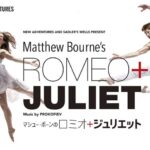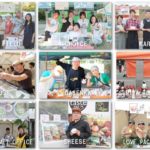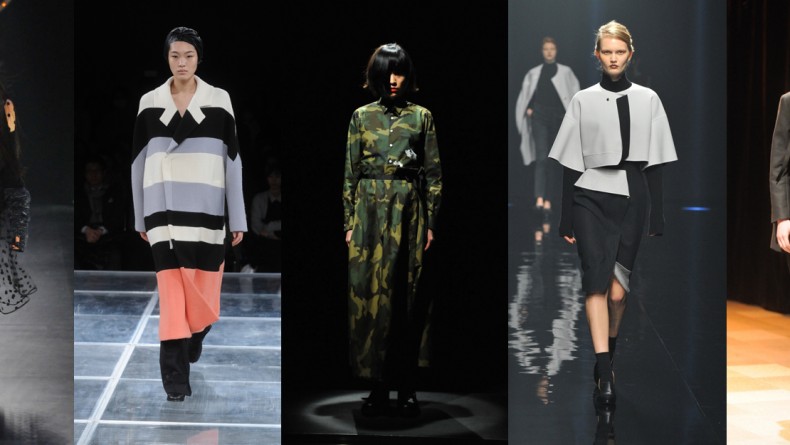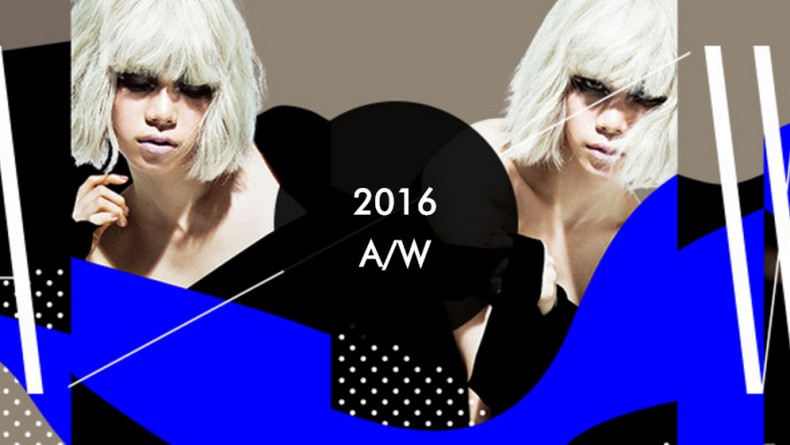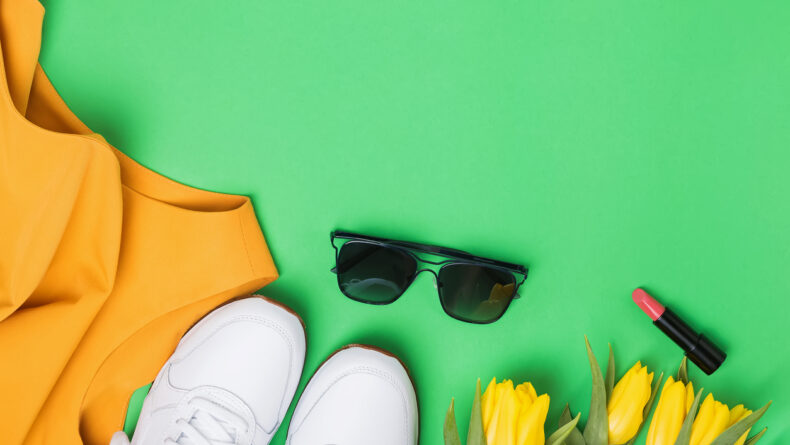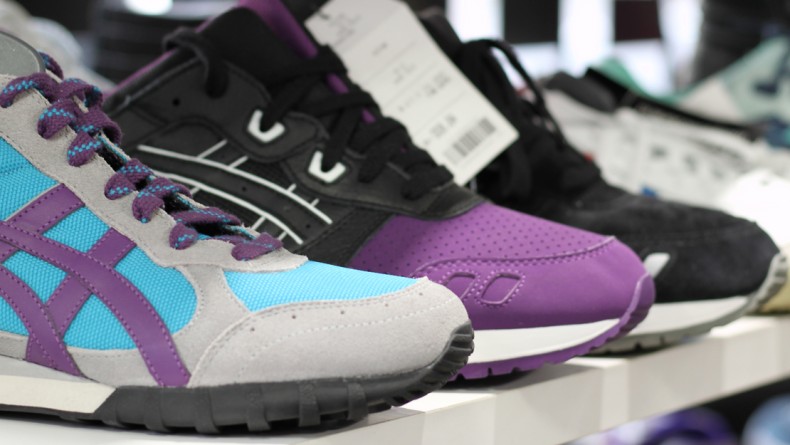Tokyo Fashion Week Fall 2016: Part 2
Tokyo's biannual fashion week moves ahead, with days three and four bringing everything from beautiful kimonos in modern prints to androgynous, oversized outerwear, and even some very cutting-edge menswear for the most stylish of guys. Read on for more recaps of the top collections from the past two days.
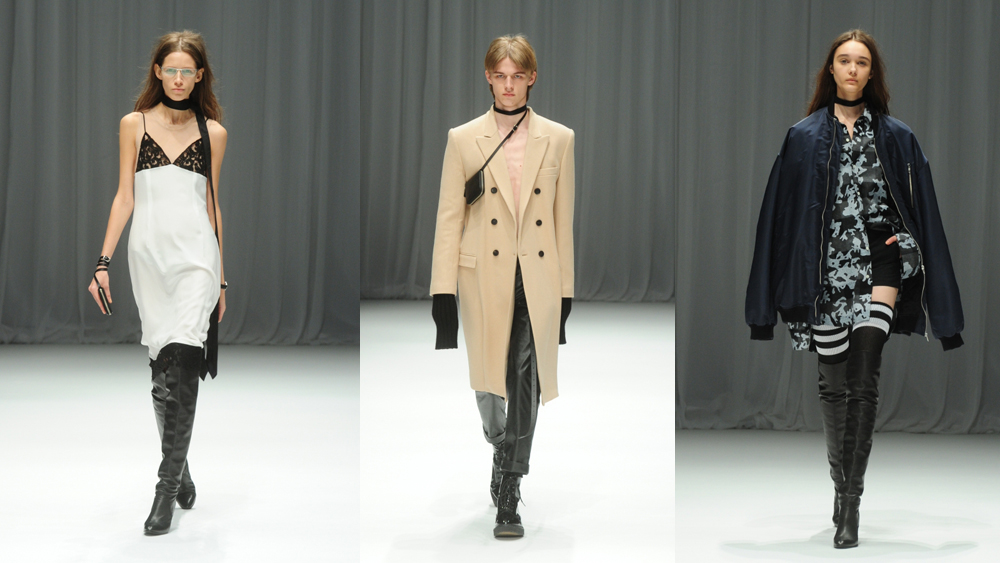
DressedUndressed
DressedUndressed designers Takeshi Kitazawa and Emiko Sato launched their edgy, cool and minimalistic brand in 2009. The label is a staple amongst Tokyo’s fashion-forward women and men, and draws in fashion followers from around the globe.
Nineties vibes kicked off the fall show, with knee-length slip dresses, distressed hair and ribbon chokers. Lace bralettes were styled with wide legged trousers, and another look featured the dainty lace piece over a crisp button-up. Oversized outerwear partnered with lingerie was the overall theme of the show. Extended sleeves and lengths were seen on most of the overcoats and jackets, reminiscent of a man’s borrowed jacket on date night. The entirety of the collection was separates in neutral colors, apart from a camouflage shirt dress and a few pieces with quotes from Sigmund Freud. Men’s sweaters sported holes, and suspenders were used as a common accessory. The overall collection evoked a rather dismal yet sexual consciousness, bringing a toned-down gothic look back on trend. –Chanyn Kirtman
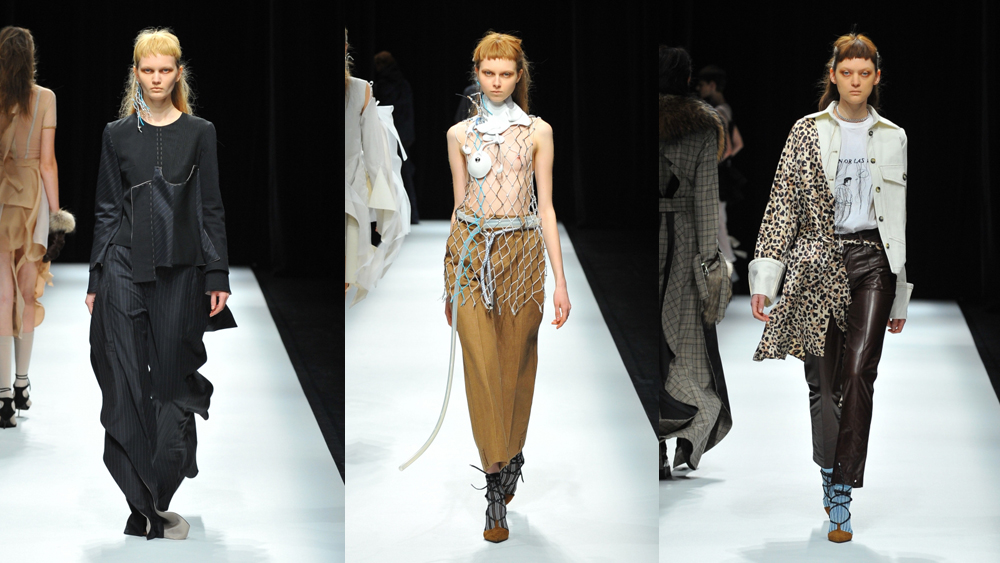
Anne Sofie Madsen
Anne Sofie Madsen, who was trained under John Galliano and worked as a junior designer for Alexander McQueen, was this season’s DHL Exported designer, following in Henry Holland’s footsteps. Madsen presented her fall collection called “Heaven or Las Vegas” in Tokyo on Wednesday after an earlier showing in Paris. Inspired by the “simple idea,” as she called it, that Elvis Presley was a twin whose brother was stillborn and Elvis, therefore, suffered throughout his lifetime.
The partially overwhelming collection was built on contrasts and ambivalence, featuring street wear and ladylike, boyish and feminine elements in an abstract way at the same time. The result? Designs that straddle fantasy and a complexity of detail. Leather, feather embroidery, ruffles, lace, denim, pinstripes, ropes and fur messed up, in sometimes weird juxtapositions, combining rock and glamour. Madsen’s passion for gathering and reassembling scraps of contrasting fabrics into garments that escape conventional silhouettes ran like a golden thread through the collection. –Linda Haberberger
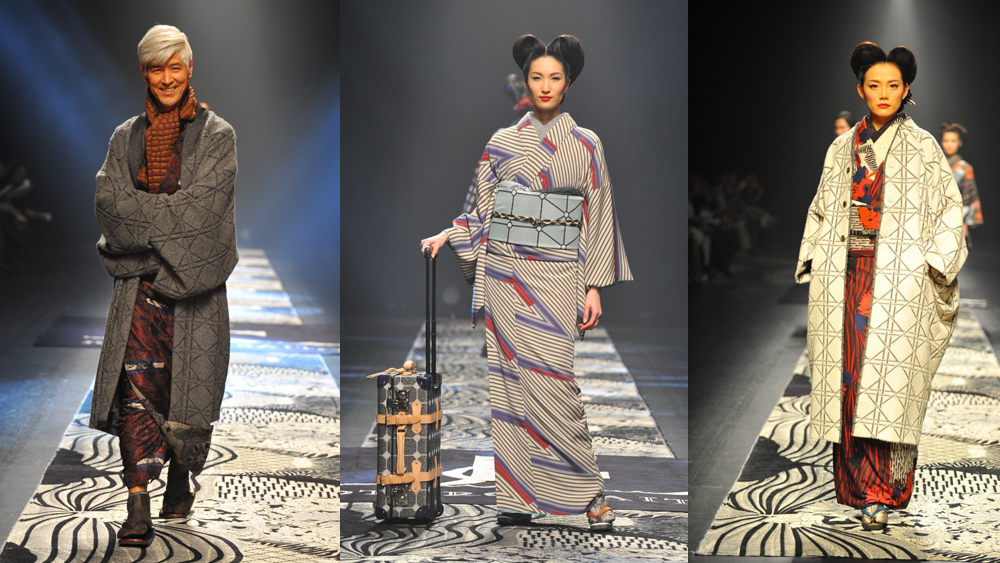
Jotaro Saito
It’s hard to believe that there is a front row in the fashion universe where almost all of the audience wears the same type of outfit. In Japan it truly exists, at the show of legendary kimono designer Jotaro Saito, the only one whose collections are regularly featured on the runway and hailed by a huge following. Saito is giving the traditional Japanese way of dressing a modern makeover by constantly challenging the status quo, as was the intention of his fall collection that aimed to “Go Beyond.”
The show displayed an irrefutable mastery of craftsmanship, starting off in a waft of mist to the German song “Der Berg” from Unheilig as flashing lights and prismatic colors illuminated the runway, setting the tone for a non-traditional and maverick spectacle. The show was further accompanied by pulsing techno beats, contrasting the gracefully mincing models in their elegant attire. In a variety of 42 kimono and yukata styles, a stunning range of beautiful traditional and modern motifs in a sea of colors was presented. Romantic florals, geometric designs, oriental ornaments, butterflies, peacock feathers, tropical and stone patterns were all unexpectedly mixed together but yet harmoniously combined. Contemporary elements such as denim, snake-leather handbags and a variety of accessories added a dash of something new. Fashionable oversized egg-shaped coats with geometrical prints that could also be spotted in a street style gallery confirmed Saito’s passionate dedication to bring kimonos in our everyday wardrobe staples. –Linda Haberberger
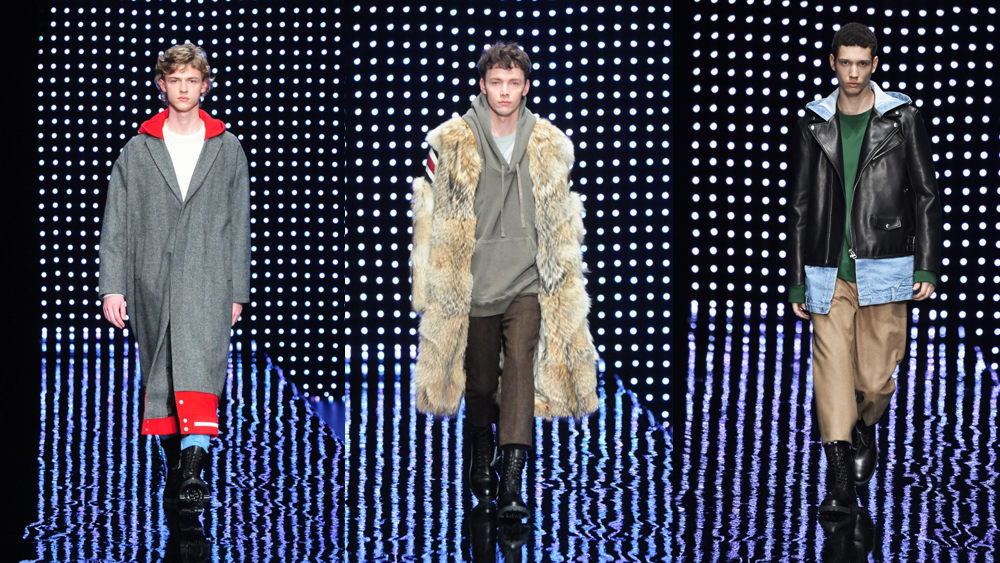
Mr. Gentleman
Menswear in Japan is at the forefront of global fashion trends, and Mr. Gentleman plays a role in establishing the unique style that makes this category so cutting edge. Established in 2012 by Takeshi Osumi and Yuichi Yoshi, Mr. Gentleman is known for fusing men’s street wear with dapper fabrications and polishes.
The fall collection boasted a variety of rich texture, tailored outerwear and creative plays on sportswear. A blue velvet suit styled with white suspenders, combat boots and knitwear was the opening look for the show. Basics were given an athleisure flair with cool trimmings such as hooded trench coats with varsity jacket edges, motto jackets with denim hoods and bottoms, and plaid fleece bombers. Immaculate styling tied together the unique blend of fabrics, such as a large fur jacket worn over a hooded sweatshirt and tweed pants. This series was designed for the cool kid with a sensibility for dressing smart. –Chanyn Kirtman
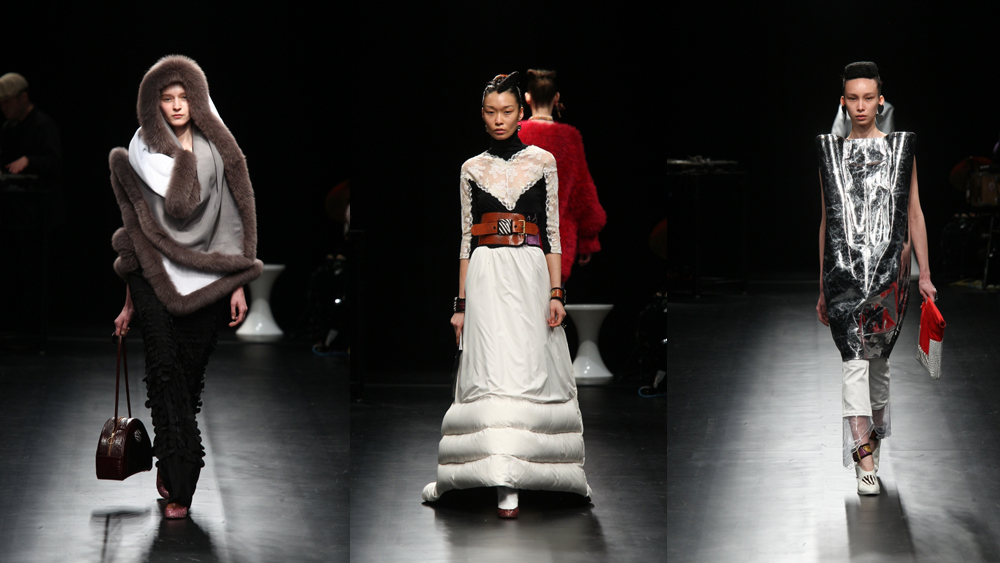
Theatre Products
Theatre Products designers Akira Takeuchi and Emiko Sato aim to create their collections under the concept, “Clothing makes the world a theatre.” Spatial elements, colors, and texture are big players in their thespian inspired designs.
It appeared that animals had the leading role for their fall collection. Large fur trimmed capes, loud zebra prints and ferret stoles were distinct in the lineup, while lace details made pieces a little more harmonious. Jumpsuits and dresses came in all kind of characters, from a sequined long dress with a plunging neckline, a metallic boxed framed silhouette, and a white dress with a lace top and what resembled a quilted puffer jacket on the bottom. Using texture and loud prints, the otherwise basic designs were feminine but leaned toward the gaudy side. –Chanyn Kirtman
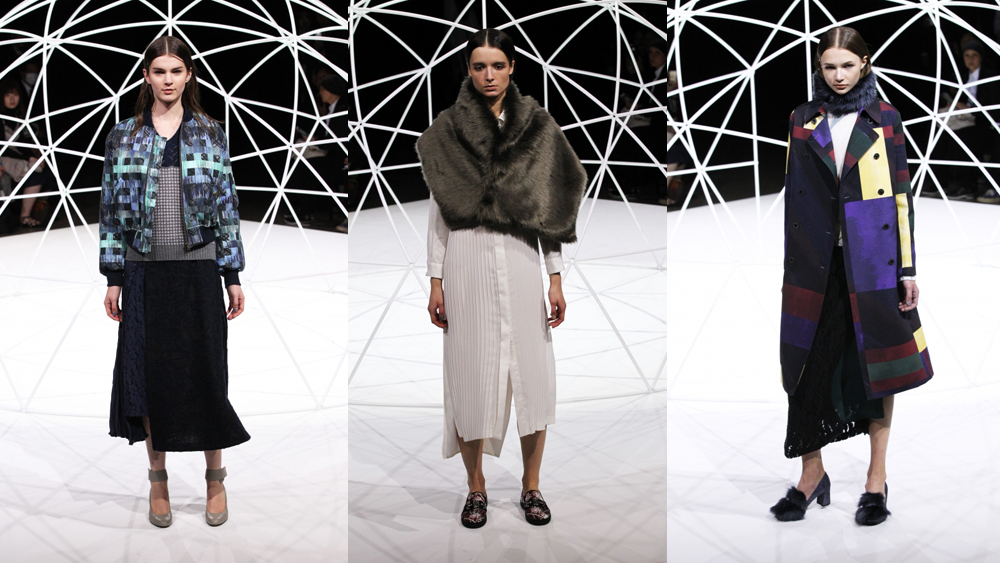
In-Process by Hall Ohara
Designer duo Yurika Ohara and Steven Hall did not try to reinvent the wheel for fall, instead sticking to their core value of capturing the aura of a garment through their expressive prints and textile designs.
Models circled a geometrical dome on a square catwalk, presenting a collection that was inspired by German artist Jadranko Rebec, who “simplifies the sense of movement through contrast between bold, architectural and organic.” Unconventional fabric ensembles gave the collection a visceral texture, such as the combination of random accordion pleats, printed jacquard and pique that made an appearance in several calf- and ankle-length dresses and skirts. Rich materials such as lace and jacquard were used decoratively, giving the outfits a rather outdated touch. A monochromatic masculine oxford cotton dress with knife pleated satin in combination with a giant fur stole, was a surprising, yet not progressive composition in a collection of wild mixed geometric and floral patterns. While the usage of texture and patterns was excessive, silhouettes were kept minimalistic in the form of straight dresses, MA-1 bomber jackets, and shaggy, loose fitting alpaca coats. –Linda Haberberger
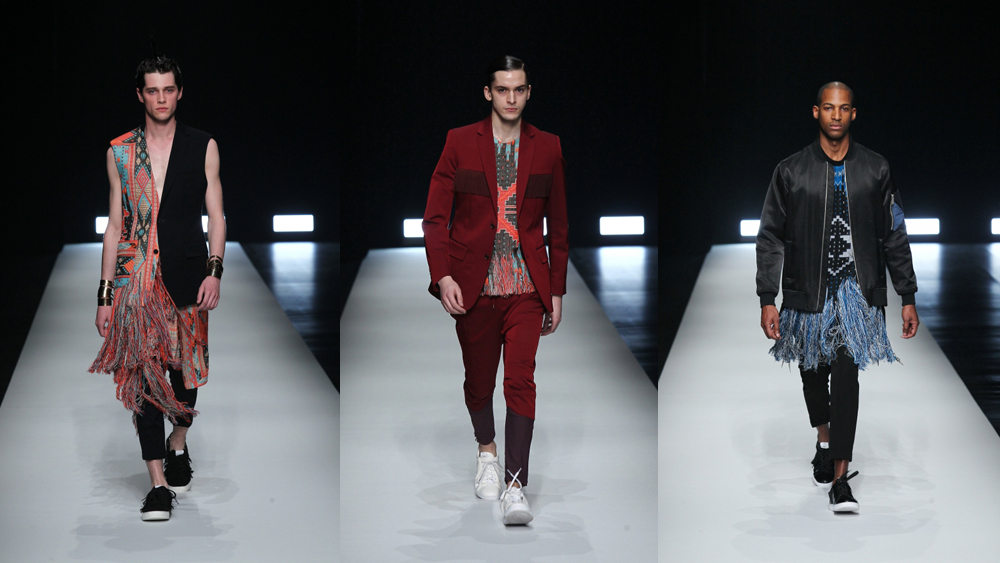
Yoshio Kubo
Yoshio Kubo is one of the few high-profile designers who sticks to his origins and still shows his collections in Tokyo while others exhibit off schedule or have followed the big names to Paris and Milan. In collaboration with accessory brand Heavy & Co. Blacksmith, Kubo impressed with a colorful lineup that was sophisticated and edgy at the same time, complemented by rough accessories such as metal bracelets and dangling zippers. Known for his use of striking graphics and his creativity in reworking wardrobe basics, this season Kubo ventured into new shapes and accessories that added a progressive dynamism to the collection. Inspiration was borrowed from South American tribes, borrowing their unique spicy color palette, powerful patterns and relaxed silhouettes. Models with stiff Mohawk headpieces walked down the runway in colorful, Aztec patterned ponchos, long pullovers with skirt-like swinging fringes, and embroidered sweatshirts. Among the neat and street-ready collection, a monochromatic tailored suit in rusty aurora red with tonal fringes at the breast pockets, and a long vest, half printed vibrantly in tribal patterns, half monochrome in black, had every phone in the venue snapping double-time. Towards the end of the show the designs became more subtle with white paint splatters on black suits, or on denim pants and jackets, which topped a show full of a Native American vibe, providing scores of refreshing looks for the urban street dandies. –Linda Haberberger
Don’t forget to check out our coverage from earlier in the week as well! For recaps from the first two days, click here.




